#1541: Thanksgiving hiatus, understanding 5G, iPhone 12 mini and Pro Max reviews, hiding Big Sur update badges, iOS 14.2.1, App Store commission drop
This week includes the Thanksgiving holiday in the United States, so we’ll be taking the opportunity to count our blessings and recover from the ravages of 2020 instead of preparing an issue for next week. Look for our next issue on 7 December 2020. Last week, Apple released iOS 14.2.1 to address three iPhone 12 bugs and set tongues wagging by cutting the App Store commission for smaller developers in half. macOS 11 Big Sur is here, but if you’re not yet ready to update, Adam Engst tells you how to hide its stinkin’ upgrade badges. To flesh out the issue, Josh Centers rounds up reviews of the iPhone 12 mini and iPhone 12 Pro Max, and Glenn Fleishman shares an in-depth explanation of what 5G is, how it works, and why it will eventually be important. We’re still catching up from having more Watchlist items than fit in an issue, so our notable Mac app releases this week include Mailplane 4.3, Agenda 11.2, URL Manager Pro 5.5, CleanMyMac X 4.7, Transmit 5.7, SEE Finance 2.2, Safari 14.0.1, Security Update 2020-006 (Mojave and High Sierra), Hazel 5.0, Nisus Writer Pro 3.2 and Nisus Writer Express 4.2, Firefox 83, Pixelmator Pro 2.0, Zoom 5.4.3, 1Password 7.7, and DEVONthink 3.6.
No TidBITS Issue on 30 November 2020
This Thursday marks the Thanksgiving holiday in the United States. We won’t be publishing an email issue on 30 November 2020 so our staffers and contributing editors can spend the coming week with family, friends, and food. Well, at least food and family who are members of our immediate households.
2020 has been a rough year, to say the least. Over a million people have died due to the COVID-19 pandemic, with more than 250,000 of those being our fellow Americans. Countless others are ill, some critically, and even many who have recovered from the initial infection are suffering lingering aftereffects. Beyond that, the pandemic has devastated the economy, destroying businesses and leaving many unemployed.
To those who have suffered loss this year, you will be in our thoughts as we gather around our tables. We plan to count our blessings wherever we can find them, and we encourage you to try to do so as well. The coming winter may be dark, but spring will come again and hopefully bring with it widespread distribution of a safe, effective vaccine.
In the meantime, please stay home this holiday season, and if you must go out, wear a mask and wash or sanitize your hands often. We love our readers and hope to spend many more years with you.
While we’ll miss our extended families this year, there’s comfort in food. We will again be consulting the handy worksheets from Joe Kissell’s Take Control of Thanksgiving Dinner for our dinner preparations—no one lays out what needs to be done better or more clearly than Joe, so check out his book if you’re looking for help.
Although the weekly email issue of TidBITS won’t appear next Monday, we’ll continue to publish articles on the TidBITS site. To keep up with everything, visit our site, subscribe to our RSS feed—remember that TidBITS members get a full-text feed—or follow us in Apple News or on Twitter. Look for the next email issue on 7 December 2020!
iOS 14.2.1 Fixes Three Bugs for iPhone 12 Users
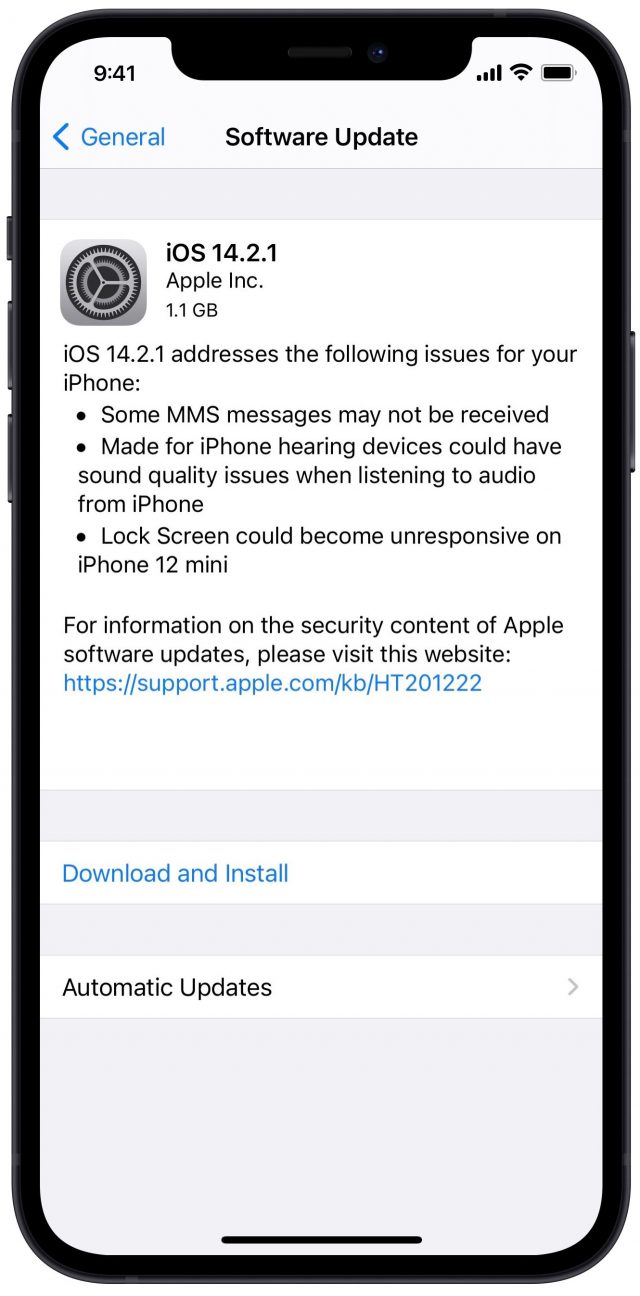 Apple has released iOS 14.2.1 exclusively for the iPhone 12 lineup: the iPhone 12 mini, iPhone 12, iPhone 12 Pro, and iPhone 12 Pro Max. Don’t bother checking Settings > Software Update if you’re using an older iPhone. The update clocks in at 1.1 GB on an iPhone 12 Pro and can also be installed from your Mac in the Finder or through iTunes if you’re using macOS 10.14 Mojave or earlier.
Apple has released iOS 14.2.1 exclusively for the iPhone 12 lineup: the iPhone 12 mini, iPhone 12, iPhone 12 Pro, and iPhone 12 Pro Max. Don’t bother checking Settings > Software Update if you’re using an older iPhone. The update clocks in at 1.1 GB on an iPhone 12 Pro and can also be installed from your Mac in the Finder or through iTunes if you’re using macOS 10.14 Mojave or earlier.
The iOS 14.2.1 update fixes a handful of iPhone 12-specific problems:
- MMS messages not being received
- Sound quality issues with Made for iPhone hearing aids
- An unresponsive Lock screen on the iPhone 12 mini
There are no published CVE entries for this update.
iOS 14.2.1 is so specific that it’s probably fine to install immediately if you have one of the iPhone 12 models. If you don’t use text messages or hearing aids, and you don’t have an iPhone 12 mini, you could put off the update for a few days, just to be safe, but it’s not something to avoid for long.
Apple Drops App Store Commission to 15% for Small Developers
Responding to increasing criticism and threats of government regulation, as well as the economic stress from the COVID-19 pandemic, Apple has announced the App Store Small Business Program, which will slash the App Store commission from 30% to 15% for developers who earn $1 million or less per year. The program is slated to launch on 1 January 2021.
Apple says that more details will be forthcoming in December, but for now, here’s what developers need to know:
- New and existing developers who made up to $1 million from the App Store in 2020 will be eligible.
- If a developer passes the $1 million annual revenue mark, they will be charged the higher 30% commission only for the remainder of the year.
- If a developer falls below the $1 million threshold in a calendar year, they can requalify for the 15% commission in the next calendar year.
Based on estimates from analytics firm Sensor Tower, this change will benefit 98% of developers while impacting just 5% of App Store revenue. (However, developer David Barnard says to take Sensor Tower’s data with a grain of salt.)
With Apple giving such a boon to small developers, you would expect larger companies critical of Apple like Epic Games and Spotify to be overjoyed since they have often claimed they are fighting Apple for the sake of such small developers. But—surprise!—they’re not happy.
Epic Games has been in a fight with Apple for months after it tried to slip a way to buy in-game currency for its smash-hit game Fortnite into the iOS version while bypassing App Store payments. Apple immediately banned the app, which triggered a flurry of lawsuits. Epic CEO Tim Sweeney had this to say about Apple’s new program:
This would be something to celebrate were it not a calculated move by Apple to divide app creators and preserve their monopoly on stores and payments, again breaking the promise of treating all developers equally.
Epic’s goal, as stated in its lawsuit against Apple, is not just side-loading of apps in the App Store, but to allow competing app stores, like the Epic Games store, to be distributed by Apple in its own App Store.
Spotify, a partner with Epic in the Coalition for App Fairness, also released a statement:
Apple’s anti-competitive behavior threatens all developers on iOS, and this latest move further demonstrates that their App Store policies are arbitrary and capricious. While we find their fees to be excessive and discriminatory, Apple’s tying of its own payment system to the App Store and the communications restrictions it uses to punish developers who choose not to use it, put apps like Spotify at a significant disadvantage to their own competing service. Ensuring that the market remains competitive is a critical task. We hope that regulators will ignore Apple’s ‘window dressing’ and act with urgency to protect consumer choice, ensure fair competition, and create a level playing field for all.
Despite those objections, actual independent developers were thrilled.
If your argument is that the companies making more than $1m a year should be paying 15%, while the rest of us indie devs pay 30%, then I don't think we're going to be friends.
This move makes things way better for the smaller devs that always were the heart of the community.
— James Thomson (@jamesthomson) November 18, 2020
Apple reducing its commission to 15% will make a huge difference to small businesses and developers like me, and could have ripple effects across the industry and across other platforms. It’s a gesture of goodwill that arguably could have come sooner, this year being what it was
— Steve Troughton-Smith (@stroughtonsmith) November 18, 2020
I lost about 30% of my revenue to this COVID recession we’re in. It’s been an insanely stressful financial year. This 15% increase almost has me in tears.
— Frank A. Krueger (@praeclarum) November 18, 2020
Thanks, @Apple, this is a great step to support indie devs. Ya’ll have lots more to do, but thank you for listening.https://t.co/KlqU8PbClG
— Jared Sinclair (@jaredsinclair) November 18, 2020
Whether or not this is primarily a PR move on Apple’s part, it means real money in the pockets of developers. David Barnard estimates that he would have raked in an additional $380,000 over the past 12 years with a 15% commission, or an average of over $31,000 per year. That’s a real difference to a real person.
Hiding Apple’s Big Sur Upgrade Badges
Implicit in the use of computer technology is the understanding that it will change, and you will have to go with the flow (see “Why You Should Upgrade (On Your Own Terms),” 4 September 2015). That becomes more true every year, particularly in the Apple world, where the company continually pesters users into upgrading in various ways. Some are technically justified—it’s unreasonable to expect Apple to forgo all forward motion on a system like Reminders, just so it can remain backward compatible forever. Others are downright essential—if you don’t stay within two macOS releases behind Apple, your Mac could be exposed to significant security vulnerabilities that have been fixed in later releases.
Badges?
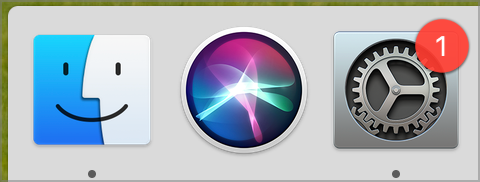 But some of the ways Apple encourages updates make using a Mac that’s not running the latest version of macOS a little less comfortable. Most notable among these is how Apple badges the System Preferences icon in the Dock to indicate that a macOS update is available.
But some of the ways Apple encourages updates make using a Mac that’s not running the latest version of macOS a little less comfortable. Most notable among these is how Apple badges the System Preferences icon in the Dock to indicate that a macOS update is available.
On the face of things, that’s not unreasonable. Apple should be alerting users to the release of new versions of macOS. Apple also pushes a notification—again, not something to protest as long as it doesn’t recur too frequently.
Unfortunately, there’s no Apple-provided way to make that System Preferences badge go away, so it constantly reminds the user that an update is waiting. That’s problematic because it teaches users to ignore the badge, which could prevent them from installing a critical security update in the future. It’s also a visual distraction. The macOS interface shouldn’t be cluttered with information that the user has deemed unnecessary.
In the past, there was a softwareupdate -ignore command you could issue in Terminal to make the badge disappear, but Apple made it so that option is available only for Macs that are managed by an MDM solution. In other words, IT admins who have not yet certified a new version of macOS as compatible with their organization’s tools can hide the badge for their users, but everyday Mac users can no longer avail themselves of this trick.
With macOS 11 Big Sur, Apple seems to have taken the upgrade nags a step further. In the Updates screen of the App Store app, most Mac users will be offered an update to GarageBand 10.4.1. However, if you haven’t yet upgraded to Big Sur, trying to update GarageBand will result in an admonishment that the update isn’t compatible with previous versions of macOS.
At first, I thought this was just a mistake, an assumption bolstered by a report from a TidBITS reader in SlackBITS who called Apple support and was told it was just a bad package that would be fixed soon. It makes little sense that GarageBand, alone among Apple’s major productivity apps, would be restricted to Big Sur. (Most of the rest have been updated recently and still work in earlier versions of macOS.)
Nevertheless, both Apple’s GarageBand page and the App Store page for GarageBand explicitly say that Big Sur is now required. So if there’s a mistake here, it’s in GarageBand’s actual code and how Apple is marketing the app, not how it was distributed.
The practical upshot is that Mac users who are delaying the Big Sur upgrade as we—and most Apple consultants and admins—recommend will also see a badge on the Dock icon for the App Store app. Plus, clicking Update All will always result in that error about GarageBand requiring Big Sur unless you delete GarageBand from your Mac.
This is shoddy behavior on Apple’s part. That softwareupdate -ignore command should be given back to everyday users. The App Store app should reliably tell you when there are updates available for your Mac. Advertising an update that a Mac can’t install is at best unnecessary. Also, the App Store app used to let you ignore updates from a particular app, but that option disappeared at some point in the past few years.
We Don’t Need No Stinkin’ Badges!
With a nod to the famous paraphrase of a line of dialogue from the 1948 film The Treasure of Sierra Madre, “We don’t need no stinkin’ badges!”
Personally, I’m not all that bothered by the badges, but some people are, so here are three solutions:
-
- Clear your Dock: Drag the System Preferences and App Store icons off the Dock. There’s no reason they have to be there. You can always access both from the Apple menu, though it too will tell you about updates with little lozenges. Of course, you can also launch both using Spotlight and in any number of other ways.
- Use aliases instead: So you really want those icons on your Dock? Try this instead. Select System Preferences in the Applications folder, choose File > Make Alias, and drag the alias to the Dock. It looks just like System Preferences but won’t get an update badge. However, it does have an alias badge in the lower-left corner. Repeat with the App Store app. Then drag the original badged icons off.
- Use Automator workflow applications instead: Is that alias badge bugging you? Try this. First, make sure System Preferences is running. Fire up Automator, choose File > New, select Application, and click Choose. In the workflow, search for “launch,” double-click the Launch Application action, and choose System Preferences from the pop-up menu. Save your app to the Applications folder with a unique name, and then drag it onto the Dock before removing the original badged icons.
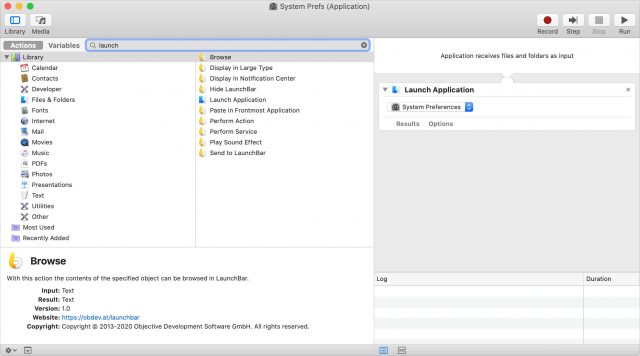
Here’s a look at how your Dock might look with the last two solutions.

Unfortunately, there’s currently no way to eliminate any of the notifications, App Store errors, Apple menu lozenges, or badges on the Software Update preference pane inside System Preferences. That’s too bad, and we’d like to see Apple give users back the option of ignoring both macOS updates and App Store updates.
iPhone 12 Mini and iPhone 12 Pro Max: A Roundup of Reviews
Ready for round two? We rounded up reviews of the iPhone 12 and iPhone 12 Pro after the embargoes broke in “iPhone 12 and iPhone 12 Pro: A Roundup of Reviews” (23 October 2020). Now, similar reviews have started appearing for the iPhone 12 mini and iPhone 12 Pro Max. I strongly recommend perusing the earlier reviews if you haven’t because we won’t be covering the basic features of the iPhone 12 lineup again here.
The iPhone 12 mini and iPhone 12 Pro Max are polar opposites. The former is the smallest iPhone in years, while the latter is so large that some people find it hard to hold and difficult to fit in many pockets. While distinguishing the iPhone 12 from the identically sized iPhone 12 Pro was tricky, deciding whether to buy the iPhone 12 mini or the iPhone 12 Pro Max is much easier:
- iPhone 12 mini: If you’ve been demanding a smaller iPhone, buy the iPhone 12 mini. Bought an iPhone SE earlier this year but find that it’s still larger than you’d like? Sell it and buy the iPhone 12 mini, because Apple may not make another unless it sells well. For everyone else, the screen might be smaller than you remember, and you won’t get the same battery life as the basic iPhone 12. It’s also $100 less than the iPhone 12, which is impressive given that it has all the same capabilities.
- iPhone 12 Pro Max: It’s only $100 more than the iPhone 12 Pro, so price isn’t the big factor, size is. Do you want the absolute best iPhone camera and don’t mind carrying around a lunch tray? Buy one. You’ll get top-notch battery life to boot.
Those are the basics. Let’s look at what the reviewers had to say. And then, finally, let’s revisit the iPhone purchasing decision.
iPhone 12 mini Reviews
The iPhone 12 mini costs $100 less than its big sibling, but its feature set is identical, except for battery life. In his review for Tom’s Guide, Adam Ismail said:
You expect corners to be cut in downsized premium smartphones, yet the iPhone 12 mini never makes them. As you’ll see in our iPhone 12 mini review, aside from unavoidable sacrifices to battery life, this is still every bit the iPhone you want, at an even cheaper price.
Ismail added:
The iPhone 12 mini is exactly the kind of device I wish more phone makers had the conviction to build. In a way, it really is the most impressive member of the iPhone 12 lineup, because it does everything the larger, more expensive models do, but amazingly fits all that capability into an [impossibly] small frame.
At TechCrunch, Matthew Panzarino had the same feeling:
Because the iPhone 12 mini has no appreciable compromises in feature set from the iPhone 12, I consider these one device with two screen sizes.
Daring Fireball’s John Gruber is also a fan:
But if we’re talking about value, about bang for the buck, the iPhone 12 Mini is the standout. There was a time when miniaturization in technology cost a premium. Smaller cell phones cost more than larger ones. A smaller camera that captured the exact same quality images cost more than a larger one. That the iPhone 12 Mini costs $100 less than the iPhone 12 feels too good to be true.
So what’s the catch? For one, the small screen may not be as fun as you remember.
Ismail said:
You almost have to relearn how to live with a device and screen this small; I found my thumbs [crashing] into each other more often when typing, for example.
That said, most reviewers praised the return of the small size. Dieter Bohn of The Verge said:
The iPhone 12 mini feels like the first iPhone in a long time with a different goal. It was designed around the human hand and real pockets.
But that small size comes with one drawback: a smaller battery, with the iPhone 12 already suffering from shorter battery life than its predecessor. Bohn said:
I don’t want to sugarcoat it nor be overly dire about it, but the battery life on the iPhone 12 mini is noticeably worse than on the iPhone 12, which itself was a step down from the battery-champ iPhone 11… So it’s not bad, but it’s definitely not great. My feeling after a little less than a week is that getting through a day requires a little bit of battery management.
Despite that, he proclaimed the iPhone 12 mini his favorite of the lineup.
Gruber said:
Yes, I noticed battery life on the Mini wasn’t quite as good as on the 12 and 12 Pro (and the 11 Pro I used for a year, and the XS I’d used the year before that). But I wouldn’t hesitate for a second to buy a 12 Mini for this reason. Battery life on the Mini is, at worst, good enough. No one buys the smallest iPhone expecting the longest battery life.
Panzarino, as with his iPhone 12 review, was a bit kinder than other reviewers:
Apple says that the iPhone 12 mini’s battery life is better than the 4.7″ iPhone SE, and that bore out in my testing. I got through a day easily, with maybe a few percentage points difference between the iPhone 12 mini and the iPhone 12.
As for video reviews, Marques Brownlee focused on the size difference between the iPhone 12 and the iPhone 12 mini.
And Rene Ritchie appealed to Star Wars fans, calling it the Baby Yoda phone.
iPhone 12 Pro Max Reviews
The big story about the iPhone 12 Pro Max is: it’s big. The only real reason not to opt for the iPhone 12 Pro Max over the iPhone 12 Pro is the size.
Julian Chokkattu of Wired said:
Did I mention this thing is huge? The ‘Max’ in the name doesn’t really do it justice. It’s taller, wider, and heavier than last year’s Max, though not by much. Surprisingly, it’s also thinner.
Nilay Patel, in his review for The Verge, said:
I strongly recommend finding a way to safely see the 12 Pro Max’s size in person before making a call on ordering one.
But if you can handle the size, you’ll be rewarded with a camera that’s significantly better than the iPhone 12 Pro because Apple put larger lenses in the iPhone 12 Pro Max this year. Gruber said in his review:
But it’s also a bigger camera system. This is not obvious at all from Apple’s product marketing photography, and I can’t really take a photo myself that illustrates this in a way that feels true to life, but the 12 Pro Max camera module — the whole raised square bump containing the rear facing cameras, flash, and lidar sensor — is much bigger in surface area than the camera module on the other iPhones 12. In the previous two years, not only were XS Max and 11 Pro Max camera systems identical spec-wise to those on the XS and 11 Pro, they were the same size, too.
That enables the new stabilization system and makes for better night shots. Wired’s Chokkattu explained:
Instead of steadying the lens (which is what optical image stabilization does), Apple’s system keeps the sensor itself steady deep within the phone’s body. This makes the Pro Max more adept at canceling out the micro-movements your hands inevitably make whenever you’re taking a photo or shooting a video. It has a positive impact [on] the image quality, particularly in low light when you need to stand still for several seconds to get a clear shot.
However, Chokkattu cautions that the larger lenses are really only useful at night:
The perks of the larger sensor are harder to discern over the iPhone 12 Pro when the sun is out. You won’t find too many photos you’re disappointed with when you shoot in daylight.
Patel raved about the camera:
The upshot of all this is simple: the wide camera on the iPhone 12 Pro Max is one of the most confident smartphone cameras I’ve ever used. It can take great photos in a huge variety of situations, and rarely feels pushed beyond its limits.
As did Panzarino:
It’s huge and it has a really, really great camera. Probably one of the best cameras ever in a smartphone, if not the best. For those of you coming from an iPhone “Max” or “Plus” model already, it’s a no-brainer. Get it, it’s fantastic. It’s got everything Apple has to offer this year and it’s even a bit thinner than the iPhone 11 Pro Max.
And, of course, a larger phone means there’s room for a larger battery. Chokkattu said:
A big phone also means a big battery, and the good news is battery life here is excellent. I frequently ended up with 45 percent of a charge left by 11 pm after more than five hours of screen-on time.
On the video front, Joanna Stern of the Wall Street Journal focused on the camera differences between the iPhone 12 and 12 Pro Max.
Rene Ritchie’s “mega review” has a bit of everything, with both size and camera comparisons.
And Marques Brownlee’s review is worth watching, if for no other reason than his clever Photoshop intro.
Deciding on an iPhone
Adam Engst walked you through our thinking on the upgrade decision when the iPhone 12 was announced (“The iPhone 12: Here’s What You Need to Know,” 13 October 2020). But with more time and now that reviewers have had experience with these iPhones, let’s take another look for those who are still undecided:
- If you like your iPhone, keep your iPhone: Unless you’re on an upgrade plan or have money burning a hole in your pocket, keep your iPhone if it’s still working well. Each year, iPhone upgrades become more incremental. A new iPhone likely won’t change your life, and next year’s models will be better yet.
- Consider the iPhone SE first: The second-generation iPhone SE is the best deal going in the smartphone world. If you need a new iPhone and aren’t particular about having the latest hotness, consider the iPhone SE.
- Just buy the iPhone 12: If the iPhone SE isn’t enough and you can’t decide, the iPhone 12 is the safe default choice.
- If you asked for an iPhone 12 mini, buy it: Again, if you’re one of those people (and some of us resemble that remark) who demanded a new small iPhone, you should buy one. Vote with your wallet! If you don’t, the iPhone mini could go the way of the iPhone 5C.
- Do you want the best camera? The iPhone 12 Pro Max has, hands down, the best iPhone camera ever. At least until next year’s iPhones.
In some ways, the trickiest iPhone to pick is the iPhone 12 Pro. Apart from the telephoto lens, the iPhone 12 does most of what it does, and the iPhone 12 Pro Max has a better camera. So who is it for?
If I were to buy a new iPhone this year, it would probably be the iPhone 12 Pro for a couple of specific reasons. One is that the iPhone X got me hooked on having a telephoto lens in my pocket. Between the telephoto and wide-angle lenses, I have a lot of options when I’m taking photos of my kids or shooting snaps for articles.
The other is that I like its middle-of-the-road iPhone size. I loved my Plus-sized iPhones, but they were hard to pull out of my pocket, even without a case. Having two young children necessitates protecting my iPhone with a sturdy Otterbox case, so if I bought an iPhone 12 Pro Max, I’d have to carry it around on my belt. The iPhone 12 Pro form factor gives me plenty of screen space in a less-awkward size.
What about you? If you’ve either just bought a new iPhone or are planning to buy one before the iPhone 13 comes out next year, what model would it be? Register your vote in our quick single-question survey and let us know why in the comments.
Understanding 5G, and Why It’s the Future (Not Present) for Mobile Communications
How much bandwidth do we need in day-to-day life? Do we need enough to stream 4K video at 60 frames per second while driving down the highway? How quickly do we need interactions to round-trip from our phones to provide a real-time feel and interact with new devices—like self-driving cars? In a world where billions have little access to high-speed data, why would a gigabits-per-second standard even matter?
Those are the questions that we should ask as cellular data networks continue to mature. Apple devoted a “Stan Sigman of Cingular at the iPhone introduction” level of time and attention to 5G at its recent iPhone 12 introduction, and many of us in the industry are still puzzling over why. Apple doesn’t usually parrot marketing points or let speakers from other companies drone on about things that aren’t immediately useful to Apple or its customers.
Fifth-generation (5G) cellular networks have already achieved a reasonable level of rollout across the US and a few other countries, and many more countries are aggressively pushing private companies to build out the infrastructure as a national goal. It will eventually allow phones, tablets, fixed devices, and other equipment to transfer data at speeds ranging from hundreds of megabits per second to several gigabits per second. That’s impressive, given that it’s far faster than the vast majority of broadband Internet connections in the developed world.
5G is inevitable, and it would be a simple joke to say that it’s “just one more” than 4G, but to some extent, that’s true. 3G was the first Internet-focused flavor of cell networks, and 4G and 5G built on those principles. But 5G is being marketed as The Next Big Thing that will have some kind of transformative effect on everyday life and business.
Even the current generation of 5G-equipped devices that really have 5G tech—not the “5GE” label that is just fast 4G—have the potential to make data move zippier and with fewer delays. In practice, though, true 5G is hard to find in the field, where 4G LTE often outpaces 5G with current-generation devices. (Apple’s 5G-enabled iPhones aren’t yet widespread, so we can’t compare their performance; it’s unlikely to be much different.)
However, 5G won’t be transformative for most people or purposes. Its advantages primarily accrue to cellular carriers, even more so than 3G or 4G, which offered significant boosts in throughput and allowed higher rates over broader areas. 5G will let carriers charge more for service in some cases, handle more customers simultaneously, break into new markets that require higher throughput or low latency, and equip more kinds of devices with ubiquitous high-speed cellular data connections.
For users, it will gradually feel like we have broadband no matter where we might be, which is not terribly exciting except when you want to stream a 4K movie in the backseat of a car on a highway or download a 5 GB file in a minute in a coffee shop. The level of excitement should be more akin to finding out your city has silently dug up the streets while you were sleeping, replaced 10-inch water mains with 20-inch ones, and then cleaned it all up without you knowing. 5G is better network plumbing that your “Internet utility” has to install to deal with the amount of data and new data connections it wants to move around a city.
(If you’re concerned about health issues related to 5G, I wrote an extensive article about why the current debate is mostly manufactured. See “Worried about 5G and Cancer? Here’s Why Wireless Networks Pose No Known Health Risk,” 6 December 2019.)
Let’s start with the 5G technology and move into its applications.
Five Gee Whiz
The cellular industry has advanced across five generations of standards, about one generation per decade, starting in the 1980s. The 1G standard was analog and entirely focused on voice, although slow data rates could be crammed through. (I once filed a newspaper column over 1G at 9600 bps.) 2G switched to digital, improved voice quality, and enabled throughput close to that of the 56 Kbps dial-up modems of the 1990s. Next, an interim 2.5G improvement called EDGE, a bridge to 3G, upped data rates to as fast as 200 Kbps in Apple’s first iPhone. (That iPhone avoided 3G because the chips available in mid-2007 drained batteries like the dickens.)
It wasn’t until 3G emerged that we saw glimmerings of modern, high-speed, ubiquitous Internet availability. While 3G came in many flavors, it started at roughly hundreds of Kbps upstream and just over 1 Mbps downstream in the best conditions. Over a few years, improved phone chips and base stations enabled 3G to reach over 7 Mbps downstream. Some versions allowed voice and data to flow simultaneously; others had to pause data while a call was active.
While the future of cellular was still in development as Long Term Evolution (LTE), which would be the underpinning of 4G networks, carriers in the US got antsy. They started labeling their faster 3G networks as “4G,” presaging what’s happening today with 5G. Early “4G” networks were only slightly faster. True 4G LTE boosted speeds into the current tens of Mbps range, although LTE’s specification allowed for up to 1 Gbps for fixed usage and 100 Mbps for mobile purposes. (4G and LTE are sometimes used together, as “4G LTE,” and sometimes LTE is used preferentially to 4G.)
Along with the evolution of these generations came an increase in the number of electromagnetic frequency ranges that cellular carriers could use. Every country slices its spectrum up a little differently, though North America and much of Europe are aligned, as are many adjacent countries in other regions. While you may be accustomed to unlicensed spectrum used for Wi-Fi, cellular carriers must generally purchase licenses—often time-limited leases—for swaths of spectrum at auction or in carefully arranged government deals that in some countries reek of patronage, nepotism, or outright corruption.
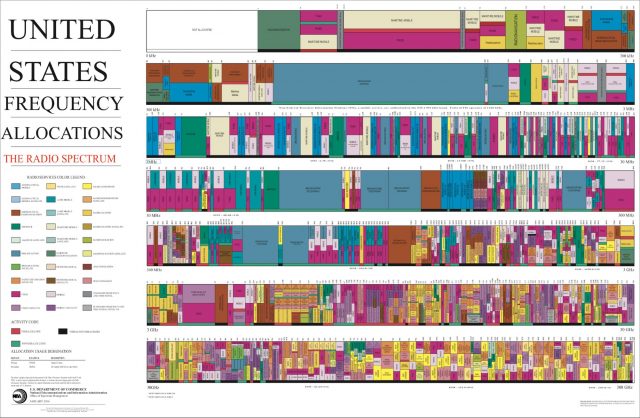
As cellular standards advanced, radio-chip manufacturing became more sophisticated, processing power and bandwidth demands from phones grew ever heavier, and spectrum availability became more baroque. Early cell phones, even well into the 3G era, had chips that could handle only a handful of popular bands. Apple made several models of iPhones to cope with worldwide differences. Over just a few years, though, Apple, Samsung, HTC, and others generally gained the ability to produce as few as two worldwide models that could handle dozens of bands. While 3G moved a bit in this direction, 4G was more substantial, and 5G takes the cake. If you want to get a sense of how many different frequency bands are currently used, consult Apple’s 5G and LTE iPhone bands page.
If you read down that list with a gimlet eye, you will note something intriguing: while most frequencies are listed as MHz (megahertz), just a few have GHz (gigahertz) following their names—and only on the newest iPhone models sold in the United States.
That’s because the actual innovation in 5G isn’t in better data rates in spectrum ranges used by 4G and earlier standards. Rather, it’s about millimeter-wave (mmWave) transmissions that work at extraordinarily high rates over very short distances. Let’s dig into that along with what else 5G offers.
Long and Slow or Short and Fast
When trying to increase data throughput in any communications system designed to pass information, wired or wireless, engineers are constrained by the Shannon-Hartley theorem, a proof developed by three brilliant people (Harry Nyquist was the third) and named for two of them. The theorem effectively explains the upper limit of information—in digital communications, the data rate—that can be carried by a system and how the presence of noise reduces that maximum rate.
There’s always noise, which disorganizes information. Noise is why you might see a Wi-Fi device advertised as carrying a maximum of 3.2 Gbps but measure only 500 Mbps of actual throughput when you copy a large file: with any interference or signal degradation over distance, the maximum data rate quickly drops down. (Wireless networking also has a fair amount of overhead—from 20 to 40 percent of throughput—that’s necessary for managing traffic and preventing competition among devices on the same and nearby networks.)
Throughput = Spectrum x Antennas
There are several methods to improve throughput within the constraints of Shannon-Hartley. One is to add spectrum: expand the frequency ranges to increase the amount of data that can flow. But adding frequencies requires the aforementioned government interaction. Countries are eager to spur innovation and investment, so they have regularly made more spectrum available to gain the ostensible future benefits of 5G.
Another method of improving throughput relies on adding antennas. That might sound like just improving reception or transmission, but for over 15 years, multiple-in, multiple-out (MIMO) radio systems have allowed devices to transmit simultaneous streams of data that a receiver can distinguish. By changing certain wireless characteristics and using different combinations of antennas, cellular and Wi-Fi base stations can even direct signals directly to specific devices, called beamforming.
MIMO allows frequency reuse in the same space, effectively multiplying throughput. It doesn’t violate Shannon-Hartley because it leverages distinct paths across the same volume of space. Imagine a billiard table on which you send balls caroming around along unique paths. The difference is that as long as wireless signals are on different paths, they pass through each other, unlike billiard balls.
But MIMO has a physical constraint: antennas have to be a particular length that corresponds with the frequency wavelength. The 2.4 GHz wavelength used in Wi-Fi is about 5 inches (12.5 cm), and commonly used antennas are designed to be half a wavelength. You’ve probably seen Wi-Fi routers festooned with antennas—some have 8, 9, 12, or even more external ones! But there’s a practical limit on adding more antennas, even for cellular towers, due to their size and the complexity of attaching them.
The millimeter-wave (mmWave) ranges available for 5G start at 24 GHz, which allows for extremely small antennas that can be packed together tightly. (A half-wavelength antenna at 24 GHz is 0.25 inch or 6.35 mm.) Cellular base stations might be equipped with several dozen antennas linked together into a phased array, which enables precise beamforming across a huge number of combinations of antennas. The industry calls this “massive MIMO.” Many, many more devices can each receive essentially their own full-speed data stream, even in a crowded environment. (A famous Wi-Fi failure in the early 2000s was a phased-array antenna that was so far ahead of its time that, despite successful prototypes, the company couldn’t take it into actual production. But the idea was sound—particularly at mmWave scale.)

The downside of mmWave hinges on the relationship between signal power and wavelength. Higher frequencies require more power than lower frequencies to achieve the same range at the same signal quality to noise ratio (the commonly seen SNR measurement). At the same power level, lower frequencies can’t transmit as much information as higher frequencies, but they travel further and penetrate solid objects better.
Range and penetration were two reasons why 2.4 GHz was preferred originally for Wi-Fi because, with the original very narrow Wi-Fi bands, transmissions could pass through objects, walls, and ceilings while maintaining a passable data rate. Wi-Fi in 5 GHz (and in 6 GHz in the US soon) relies on rules that allow for greater power and the capability to use much larger swaths of frequencies.
With mmWave, because the frequencies used are so high (starting at 24 GHz), its estimated range is like Wi-Fi: about a 500-foot (150-meter) radius. In comparison, cellular frequencies at 2 GHz enjoy a roughly 3-mile radius, and when you drop down to the even lower-frequency 700 MHz range, signals can travel within a 6-mile radius. (In practical terms, cell towers have to overlap to ensure seamless handoff and are placed far more densely than those maximum ranges to handle large numbers of users in dense urban areas.)
There’s one more parameter here, too, that can affect throughput. Network systems encode data through modulation, which (more or less) maps bits into an analog pattern. Quadrature amplitude modulation (QAM) is heavily used for wireless communications. You can think of it as a square containing a pattern of dots spread out across rows and columns, called a constellation. The dots as transmitted should be received exactly on the interstices where rows and columns cross, but QAM is designed to let a receiver nudge dots that don’t line up back into the right place.
Each generation of digital cellular and Wi-Fi technology has increased the size of this constellation, making it possible to cram more data into each time-slice of wireless transmission. Larger constellations require cleaner signals, which typically means that a device has to be relatively close to a transmitter to achieve the higher throughputs.
Conveniently, the high frequencies of mmWave require base stations to be located close together to provide coverage at all. That fits nicely with large QAM constellations requiring clean signals.
Latency
Alongside all of these changes to increase throughput is the potential for 5G to reduce latency, a lagging factor in cellular that’s a key attribute of responsive wired and Wi-Fi networks. Latency measures the amount of time it takes for a network transmission to pass from its origin to its destination, no matter how fast it goes. Think of the flow of water to a faucet: the water pressure and pipe width control the throughput—how much water can be delivered in a period of time— while latency measures how long it takes from turning the tap until water comes out.
4G networks have a latency of about 50 milliseconds. 5G should typically be closer to 10 ms, which is similar to modern Wi-Fi and roughly equivalent to the limits of human visual perception—the time between an image appearing and us processing it. However, 5G has the potential to drop even lower, down to 1 ms, which is the same latency that wired Ethernet can achieve.
For interactive purposes, high latency is a killer: it’s what makes you see or hear a lag when using videoconferencing or VoIP calls, and it prevents things from happening in what feels like a real-time way. That’s critical for gaming, but also for many industrial and business purposes, where the lag has to be as close to zero as possible.
Sub-Channels
There’s one more trick up cellular’s sleeve. Both 4G and 5G also employ a technique—used earlier in Wi-Fi standards—that breaks a wide swath of frequency set up as a channel into tiny sub-channels, each of which has its own modulation. If there’s interference or a reflection problem in one sub-channel, it doesn’t downgrade the throughput of the entire transmission. It’s like plowing a field and avoiding rocks.
For further reading, I suggest this highly understandable article about 5G at Waveform.
The Purported Potential Uses of 5G
The US is the first country in which 5G will rely on a triad of cellular frequencies: existing ones across a range of bands, new allocations up near the bands currently used for 5 GHz Wi-Fi and soon for 6 GHz Wi-Fi, and mmWave starting at 24 GHz. It’s a grand experiment for delivering broad-scale higher-performance in lower bands and super-fast throughput as needed in the much higher bands.
The uses cited for 5G include all things we do now, though carriers actually don’t mention video streaming all that often. Perhaps 4K-quality video streams just aren’t that compelling, especially given that some carriers already downscale video automatically or require a higher-priced subscription to get higher fidelity than 480p, and more expensive plans top out at 1080p.
Carriers are excited about (and investing in) 5G because they anticipate new money-making opportunities, particularly in industries in which low-latency, high-bandwidth, high-coverage wireless enables new products or services, or allows shifting intelligence from edge devices to central processing.
Just as Web apps have benefitted from the massive improvements of speed in JavaScript running in a browser that allows a combination of locally downloaded code and seamless interaction with remote resources, 5G networks will ostensibly enable massively scaled systems that can feed data out in real time to edge points. This includes both relatively low-featured Internet of Things (IoT) devices that will benefit from storing their brains elsewhere—with all the security and privacy issues associated with that—and more sophisticated hardware, like autonomous or driver-assisting vehicles.
Some of the most compelling cases are:
- Augmented reality: In recent years, Apple has focused significant attention on AR, which can require a lot of constantly updated data that’s processed centrally and streamed to a device, all while responding to movements in the physical environment.
- Gaming: Gamers often required wired Ethernet connections in their homes for the best results. 5G will make mobile gaming more responsive.
- Rural access: Every generation of cellular technology promises better coverage for rural residents. Every generation often disappoints them, too, because carriers prefer to deploy service where they can more easily make money. However, 5G’s greater efficiency and variety of frequency options, particularly in some new frequency territory around 5 GHz and 6 GHz, should generally improve rural service.
- Urban/suburban access: In some cases, carriers and other parties might find it feasible to deliver high-speed urban and suburban residential broadband over 5G. It’s more likely to happen outside the US because in this country there’s sufficient inexpensive wired infrastructure (cable, phone wire, and fiber) in more densely populated areas. I pay $85 per month for unlimited gigabit Internet in Seattle; it’s hard to imagine a wireless provider offering even 100 Mbps at that price for residential-scale video and other use in the US. However, in some developed and developing countries, even relatively populated or dense areas lack wired or fiber-optic infrastructure at the level demanded.
- Remote medical procedures: We’ve all become more familiar with telemedicine consultations in the last few months, but with sufficient bandwidth, remote medical procedures are here today. Diagnosis and even robot-assisted surgery can be performed through remote linkages, but setting up a stable, low-latency, high-bandwidth network where a wired, low-latency broadband connection is unavailable, or for facilities that aren’t able to wire Ethernet into existing areas, would open up new possibilities. (That said, would you want a wireless surgeon operating on you? Seems like a hard sell.)
- Autonomous cars: A car can’t rely solely on a 5G network for robotic operations while it’s zooming down the highway, but it could overlay its onboard capabilities with information gathered around and ahead of it to reduce accidents and improve safety.
- Expanded sensor networks: 5G will enable massively scaled sensor networks for monitoring infrastructure. A Deloitte report suggested, “Imagine a scenario where millions of such devices can be connected in a city center, measuring temperature, humidity, air quality, flood levels, pedestrian traffic, and more.” I can imagine plenty of negative uses, too, but after suffering from weeks of bad air in Seattle recently, I can also acknowledge some of the more constructive purposes.
- Industrial robots: Robots used in factories have to be hard-wired for control to keep latency low. Wi-Fi relies on unlicensed frequencies, which makes depending on throughput sometimes iffy, as we’ve all seen. Licensed 5G inside manufacturing facilities could enable wireless robots and make it easy to move them or add new ones without rewiring the factory floor. These private 5G networks would be like Wi-Fi but with higher power, lower latency, and more stability thanks to running over restricted frequencies.
Additional use cases will surely arise as the networks are deployed, but you’re excused if you don’t find the list above compelling. That’s a problem for carriers, who are largely eating the cost of network updates, except Verizon, which is charging customers more for it; see below. It also troubles phone makers who want the engineering effort of adding 5G support to be seen as a major reason to buy the next generation of phones that have only incremental improvements otherwise. Smartphones haven’t reached the end of innovation in their features, but the camera, display, and processing improvements make less of a difference with each release.
In short, although 5G is inevitable and may become an important aspect of society’s networking infrastructure, there’s no reason for most people to upgrade to get it right now.
Carriers Plan Their Plans
When it comes to 5G rollouts, cellular carriers face a lot of competing problems and employ different marketing and pricing approaches, even as they have more or less adopted the same technology. It’s a bit like Coke and Pepsi if Coke only let you buy its sugar water in 12-packs of cans and Pepsi could only be purchased in 2-liter bottles.
For now, we’re seeing the major cellular firms roll out 5G networks in order to claim they have 5G networks in place—they want competitive bragging rights. Only a few limited areas have 1 Gbps or faster mmWave service available for customers. PCMag dug into maps for Verizon’s mmWave service and found it was scarce so far and, as expected, clustered in places that likely also have high-speed free or paid Wi-Fi. AT&T and T-Mobile have not yet announced mmWave plans. Here’s how it shakes out now:
- Verizon says its mmWave “5G Ultra Wideband” (UWB) can be found in 55 cities, while it has regular 5G across swaths of metropolitan areas nationwide. It charges $10 extra on its unlimited plans per line for 5G data rates.
- AT&T seemingly calls its current 4G network “5G,” but says “5G+” (actual 5G) is “available in select innovation zones in over 15 states across the US.” AT&T includes 5G throughput on its “Unlimited Starter, Extra, and Elite plans,” which start at $35 per month and require at least four lines.
- T-Mobile claims it has the biggest deployment, with over 7500 cities and towns having 5G in place, but given that the company also promises that “our network will be 8x faster than current LTE in just a few years, and 15x faster in the next six years,” it’s unclear which part of the network is faster 4G and which is actually next-generation 5G. At least T-Mobile says it won’t charge more for 5G service. (T-Mobile acquired Sprint earlier this year and has developed a 5G plan that coordinates the two brands.)
Verizon’s early mmWave deployments are promising, providing fiber-optic broadband and high-end Wi-Fi speeds in the extremely limited areas they cover, though I will ask again—to what end? I don’t need 1 Gbps while strolling down Newbury Street in Boston. But I can imagine appreciating excellent throughput when we’re once again surrounded by thousands of people in public.
More disappointing, however, is that the “normal” flavor of 5G, the generational upgrade to 4G, appears to be lagging behind 4G LTE performance in some areas where they overlap. That will change, but it seems odd that your fancy new iPhone with 5G capability could see worse performance than 4G in some places.
Are We Ready for 5G?
I hate to be a downer when it comes to improved technology that actually does what it says on the tin. 5G networks will provide substantial improvements in throughput and availability that we will notice—in a year or maybe two. Until then, not so much.
I’d almost rather the entire industry didn’t talk about it for a while, but 5G-involved companies have to talk about something because that’s how marketing works. Advertising that “we keep making things slightly faster” is not a winning campaign, particularly when your competitor is shooting off 5G fireworks.
5G is inevitable, in that all phones and cellular-capable devices will transition to supporting early flavors of it over the next year, including some relatively fast versions that use mmWave. The question is when we’ll see use cases that impact our everyday lives.
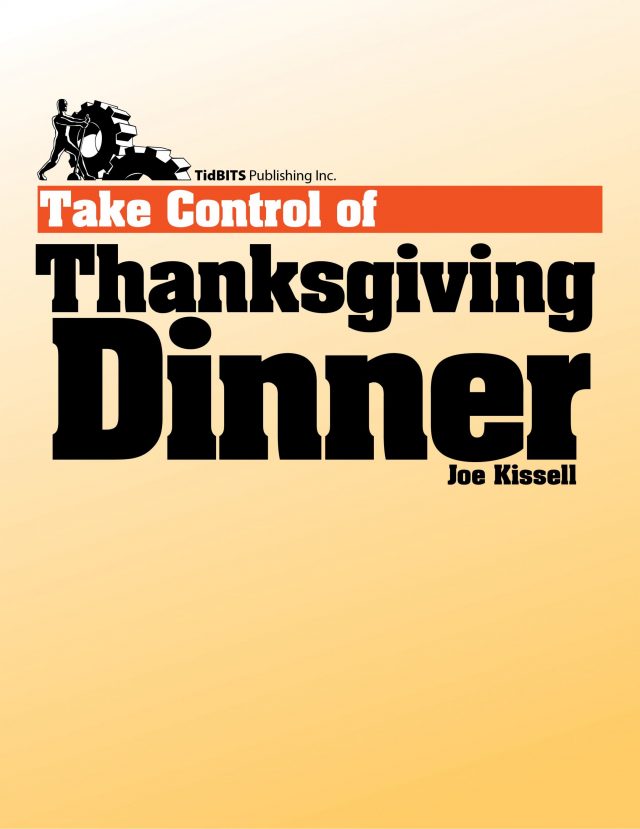
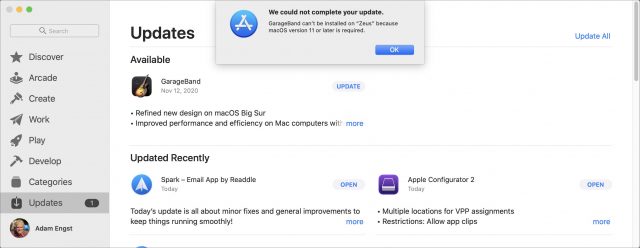

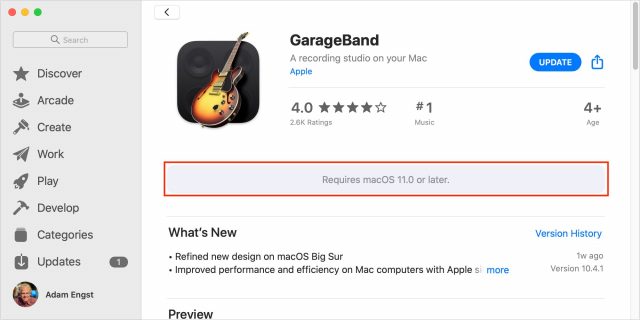
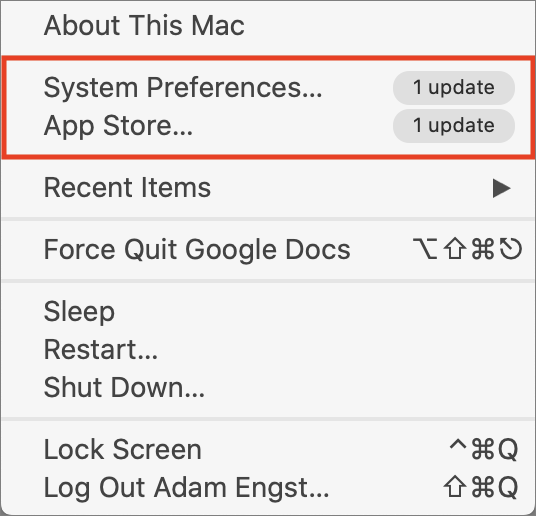
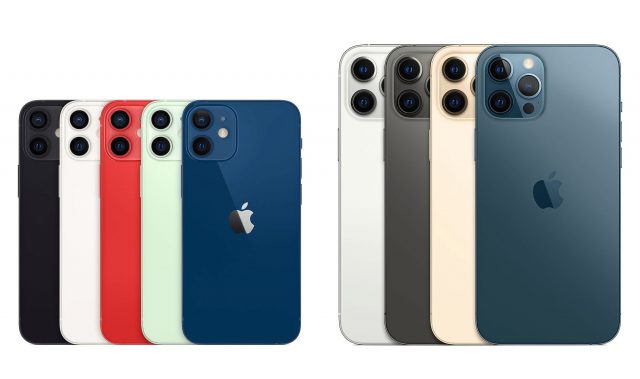
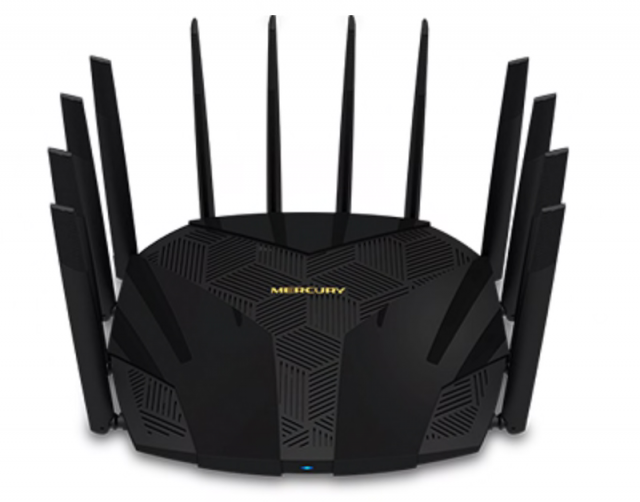
 Agen Schmitz
No
comments
Agen Schmitz
No
comments